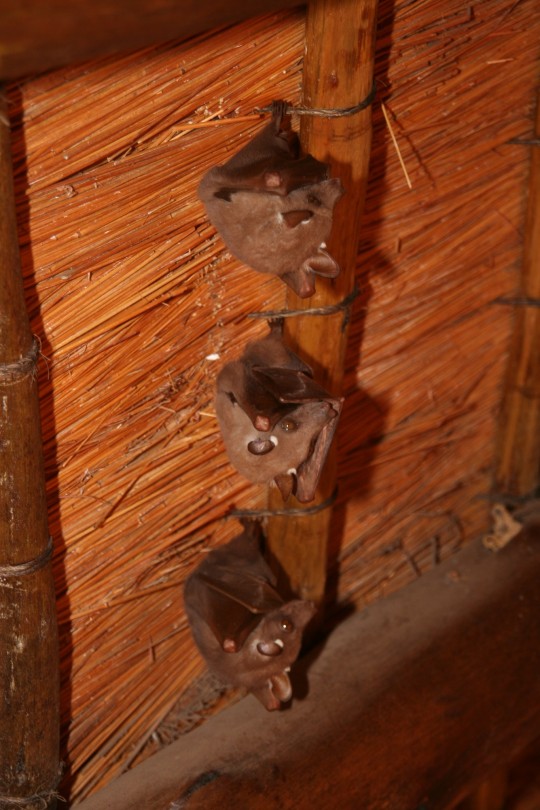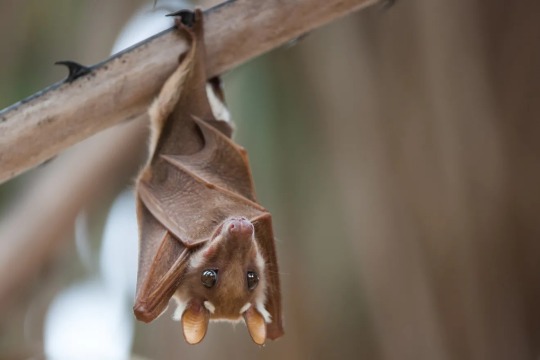#Bats of Africa
Explore tagged Tumblr posts
Text
Hands you a Them

#Savi's Pipistrelle#Bats of Africa#bat of the day#daily bat#bat#bats#batposting#cute bats#cute animals#look at them!#LOOK AT THEM
1K notes
·
View notes
Text

Small Mouse-Tailed Bat, photographed by Drew Gardner, (source)
#Small Mouse-Tailed Bat#rhinopoma muscatellum#bat#bats#cute bats#daily bats#bats of asia#bats of africa#(possibly)#batposting#chiroptera#microbat#microchiroptera#mouse-tailed bat#rhinopoma#rhinopomatidae#yinpterochiroptera
191 notes
·
View notes
Photo

#Rema#HEIS#photography#melanin#black excellence#Africa#nigerian#drip#batman#bat signal#drip check#gold chain#gold#gold jewelry#leather jacket#streetwear#dreads#black mens fashion#black mens hairstyles#photoshoot#aesthetic#dark and moody
240 notes
·
View notes
Text

A Seychelles fruit bat (Pteropus seychellensis) stretches its wings in Mahé, Seychelles
by Gary Faulkner
#seychelles fruit bat#flying foxes#megabats#bats#pteropus seychellensis#pteropus#pteropodidae#chiroptera#mammalia#chordata#wildlife: seychelles#wildlife: africa
1K notes
·
View notes
Text

A fruit bat hangs from a branch in South Africa.
Annick Vanderschelden/Getty Images
#annick vanderschelden#photographer#getty images#fruit bat#bat#animal#mammal#wildlife#south africa#nature
110 notes
·
View notes
Note
Mayst I request chapin's free-tailed bat? :}
Of course! It was a little hard to find good photos, but what a silly looking guy! I wanted to make sure I got a picture in of the male's interesting hair.


The first photo is of a male, and the second is of a female I believe :)
#central africa#southern africa#african wildlife#bat#bats#Chapin's free-tailed bat#insectivorous bats#animal polls#poll blog#my polls#animals#polls#tumblr polls#mammalia#chiroptera
96 notes
·
View notes
Note
Im not gonna lie I genuinely was shocked to see you post a vulture culture post. Not that im not pleased! But of all the blogs I follow, Yours was not a suspect until I saw your name at the top.
it's not a thing I'm into myself but I am adjacent to many people who are into it and I sure can appreciate a good skull
#please make sure your stuff is appropriately sourced though and DO NOT BUY BATS#many bat species in asia and africa that are understudied are being drastically overharvested to make 'bat mummies' and museum specimens
97 notes
·
View notes
Text

Animal of the day: Bat-eared fox! (Otocyon megalotis) The bat-eared fox, also called the motlosi or cape fox, is not a true fox; rather, it is a member of its own genus Otocyon, much like the maned wolves of South America! These small canids are closely related to the raccoon dogs and true foxes! They are actually a basal lineage of canid, which makes them one of the oldest branches of their family tree! In their wild habitat of Africa, bat-eared foxes usually congregate in small family groups, as seen above with a fox and its two kits! Their large ears aid in thermoregulation and allow them to hear their prey rustling through the tall grass with more ease! Image source: https://www.jameswarwick.co.uk/kenya-library/bat-eared-fox-family-nature-wildlife-photography-james-warwick
#fox#foxes#canids#mammals#animals#aotd#animal of the day#weird animals#carnivora#motlosi#otocyon#africa#savanna#bat eared fox#canine
23 notes
·
View notes
Text
Alright, so I was thinking about Hammerheaded Bats (Hypsignathus monstrosa), as one does, and I just... have questions.

Obviously these things are absolutely ludicrous. The deranged-looking eyes, the goblin-esque ears, the lips that look like they got slammed in a car door a few too many times. And, of course, the gloriously fearsome schnozz. As far as creatures go this is one of the creaturey-est. 10/10. Brilliant design.
It gets better, as biology usually does. These bats are large, with a wingspan of almost a meter. Males and females display some rather extreme sexual dimorphism - the males are twice as heavy as the females, and it is only they which possess the extravagant nasal anatomy. That nose is an amplifying chamber, allowing the males to honk at their lady loves with a noise rather like a duck's quack played over a squeaky fence gate. Hammerheaded bats are the only bat species known to mate in a lekking system, in which the males all come together in one place to compete for the females' affections against each other. The males with the loudest, most obnoxious honks are the most desirable to the females.
Hammerheaded bats are one of a very few mammals known to have an XO sex determination system (For reference, humans have an XY system). This means that female bats, like humans, have two X chromosomes, but males do not have a Y-chromosome; instead, they have one X chromosome and that's it. This kind of chromosomal sex-determination is more often seen in insects like grasshoppers.
All of this is good. I love me some weird animals, and Hammerhead bats are no slouches when it comes to weirdness. But, fellas, we've only just scratched the surface when it comes to the weirdness of bat. And I do mean the surface, because the real weirdness is inside.



...
OK so there's a lot to unpack here.
First off, the larynx. It's obscenely large, three times larger in males than in females. It's half the length of the entire spinal column. It's so big that it smooshes all of the internal organs - you know, important things like the heart and lungs - all the way down into the lower abdomen. AND it's connected to air sacs in the throat that amplify the honks even further.
Like. I know why these bats are like this. I know why their honk-producing apparatus is so over-engineered and dominant that there's barely any room for anything else. Biology will do crazy things in pursuit of reproductive success. But like... they still have to live. These are bats. They're endothermic and they fly. Their oxygen consumption is through the roof. HOW do they get away with squishing their heart and lungs that much?! Is there some kind of pocket dimension where the rest of their lungs are stored?! Sir, how do you breathe?!
In conclusion, Hammerhead bats break my brain and I want to know everything about them. I love living on this planet - there's so much bonkers stuff to learn.
Info from https://caitlynfinton.com/2022/05/06/meet-the-hammer-headed-bat/
#bat#fruit bat#hammerheaded bat#These guys come from Africa and they're the largest bats on the continent#Also they have fun tongues because they basically drink fruit juice all day and that requires a special kind of tongue#Also they might carry Ebola#That's not confirmed though#I love my bizarre honking disease children
200 notes
·
View notes
Text
Animal of the Day for November 18: Flying Fox (Genus Pteropus)

Flying Foxes are the biggest Bats in the world, with the Giant Golden-Crowned Flying Fox having a 5'6 wingspan, you might be shorter than a bat. Luckily they are totally harmless, Flying Foxes are herbivores who mostly eat fruit instead of insects (or blood). They are also incapable of using echolocation.
#animal of the day#november 18#november#flying fox#fruit bat#bats#mammals#africa#india#middle east#oceania#australia
13 notes
·
View notes
Text
The true scale of bats

#Botta's serotine#Bats of Africa#Bats of the Middle east#Bat of the day#daily bat#bat#bats#batposting#cute bats#cute animals#I love them
573 notes
·
View notes
Text

Franquet's Epauletted Fruit Bat, photographed by Gregoire Dubois, (source)
#Franquet's Epauletted Fruit Bat#epomops franqueti#bat#bats#cute bats#daily bats#bats of africa#batposting#chiroptera#megabat#megachiroptera#epauletted fruit bat#epomops#pteropodidae#yinpterochiroptera
223 notes
·
View notes
Text


Wahlberg's Epauletted Fruit Bat - seen hanging from the thatch roof of a house. Named for white patches of fur at the base of each ear. Frugivores, they primarily eat figs, guava, and other tree fruits. Fruit bats in general have large eyes and a snout housing powerful scent detectors, whereas insect hunters have a concave face and large ears to enhance echolocation sensors.
21 notes
·
View notes
Text

Wahlberg's epauletted fruit bats (Epomophorus wahlbergi) roost in Kruger National Park, South Africa
by jaffles
#wahlberg's epauletted fruit bat#megabats#bats#Epomophorus wahlbergi#epomophorus#pteropodidae#chiroptera#mammalia#chordata#wildlife: south africa#wildlife: africa
125 notes
·
View notes
Text

A fruit bat hangs from a branch in South Africa.
Annick Vanderschelden/Getty Images
#annick vanderschelden#photographer#getty images#fruit bat#bat#animal#mammal#wildlife#south africa#nature
143 notes
·
View notes
Text
youtube
Economic growth and wildlife conservation often run in conflict, but Mozambican scientist Cesária Huo hopes to support a new fully sustainable and economically viable model for harvesting a potent natural resource: bat guano.
In the stunning landscapes of the Cheringoma Plateau in Mozambique, Cesária embarks on an expedition with her mentor, Professor Piotr Naskrecki, Ph.D., to survey the local population of bats. With the support of a team of passionate young researchers, they plan to meticulously catalog the region’s biodiversity – bats and beyond. They hope to ensure that no species inhabiting Cheringoma’s caves could be negatively impacted by the planned extraction of bat guano by the national company, Guano Moz. Guano is a valuable and potent biological fertilizer, and sustainably harvesting the resource from Cheringoma could be a boost to the local farming economy.
As Guano Moz seeks to create job opportunities through the guano’s extraction and processing, Cesária and her team plan a detailed survey of the cave’s bat colonies: their mating seasons, habits, and population numbers. If they find the right type of bats in the cave system, it signals a higher quality of guano that justifies the cost to harvest. Both Guano Moz and scientists from Gorongosa National Park aim to achieve a delicate balance between economic development and environmental stewardship, demonstrating that sustainable progress is possible when industry and conservation unite for a common cause.
#Nature on pbs#wild hope#solarpunk#Africa#bat#bats#guano#fertilizer#sustainable harvesting#Mozambique#Gorongosa National Park#Cheringoma Plateau#Cesária Huo#Piotr Naskrecki#Guano Moz#Youtube
3 notes
·
View notes